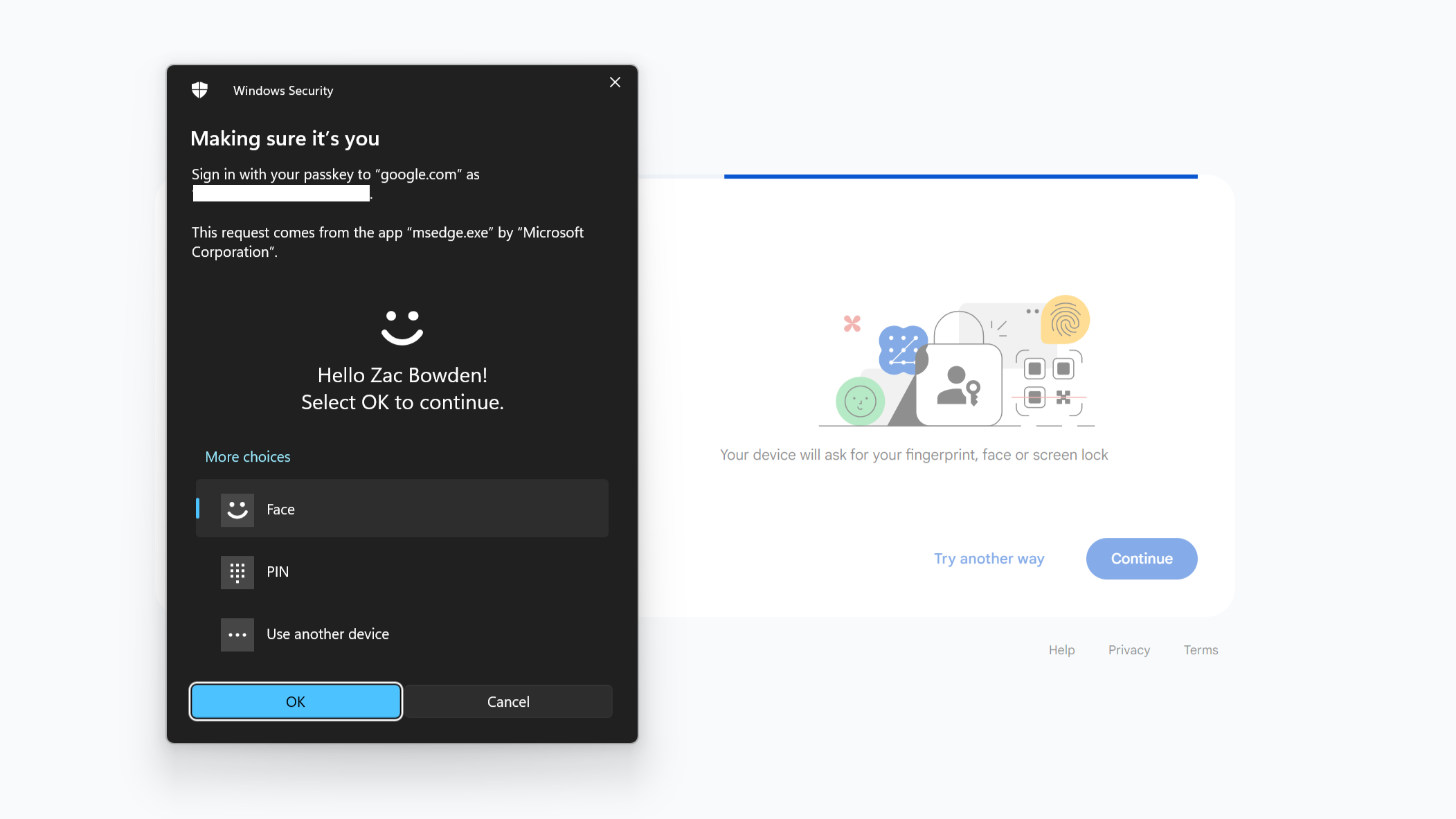
What you need to know
- Google sign-in now supports passkeys.
- Passkeys let's you setup Windows Hello peripherals as a method of authentication.
- This means you can now sign-in to Google services using Windows Hello face and fingerprint unlock on your Windows PC.
In the last few weeks, Google has rolled out a big update to its account sign-in page that now features the ability to use Windows Hello as a method of authentication when logging into your Google account. Using passkeys, users are no longer confined to logging into their Google account with a password and 2FA code.
Google describes passkeys as the following:
"Passkeys are a simple and secure alternative to passwords. With a passkey, you can sign in to your Google Account with your fingerprint, face scan, or device screen lock, like a PIN."
Essentially, Google is doing what Microsoft did years ago and is reducing its reliance on classic passwords when logging into accounts. The classic password is easily the least secure method of logging into anything, as most people don't have a unique password for every service they use, and instead use a memorable phrase or something related to them that is easily guessed.
With passkeys, you no longer need to use your password to login to your Google account. Instead, on a Windows PC it will prompt you to use Windows Hello to login. If you're on a PC with a face or fingerprint sensor it will use those, and if not, it will fall back to using a traditional PIN code.
Google is clear that any biometric data is stored locally on the device where you setup a passkey, and is never sent to Google. Support for Windows Hello when signing into a Google account requires Edge or Chrome 109 to function, on either Windows 10 or Windows 11. Passkeys also work on macOS and iPhone with iCloud Keychain.







